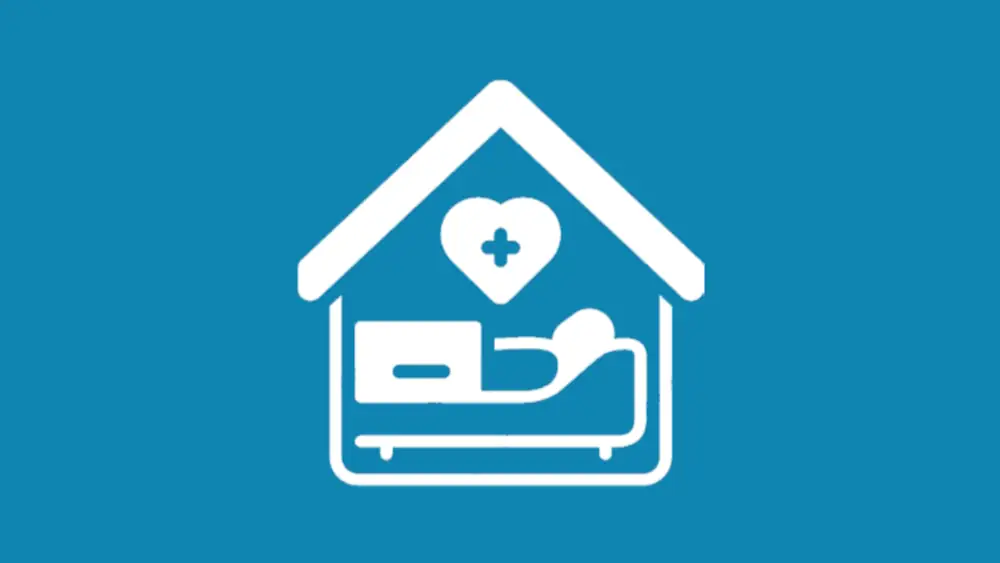Support Practices Serving Rural and Underserved Populations in High-Value Care

AMGA Goal
Develop tailored support and incentives for small practices to participate in high-value care initiatives.
In 2021, the Centers for Medicare & Medicaid Services (CMS) announced its vision to have all Medicare beneficiaries in an accountable care relationship by 2030.1 Under current policy, a lack of participation from small practices will prevent CMS from reaching this goal and, accordingly, prevent the patients served by these practices from experiencing the benefits of high-value care. AMGA recommends tailoring policies for smaller practices, those in rural areas, and those caring for underserved populations to ensure a successful transition to value.
While such practices serve populations well positioned to benefit from high-value care, there are a number of barriers preventing these providers from making the transition to value. In the context of the Medicare Access and CHIP Reauthorization Act (MACRA), small, rural, or underserved practices and individual providers largely have been exempt from the Merit-Based Incentive Payment System (MIPS). We cannot leave behind small and rural practices, as well as those caring for underserved patients in either the fee-for-service system or high-value care models.
To ensure all Medicare beneficiaries benefit from high-value care, CMS must develop tailored support and incentives for such practices to participate in high-value care initiatives rather than exempting them.
Small and underserved practices face unique barriers to participating in high-value care arrangements. Transitioning to high-value care requires significant upfront investments of both money and staff time. Without access to economies of scale, it can be difficult for such providers to make these investments. Unlike larger systems, which can devote entire teams to high-value care, these practices often lack the staff necessary to evaluate high-value care model options. This barrier is magnified for practices serving disadvantaged populations.
Rural practices face additional challenges. These providers are often the sole source of care for their communities and must provide essential services without having the patient volumes to sustain such services. Existing policies, such as cost-based reimbursement for critical access hospitals (CAHs), account for the unique nature of rural providers, but they make integration with high-value care models more complicated.
AMGA recommends Congress:
Create CMS regional hubs for small and underserved practices
CMS regional hubs can create a networked environment where small practices share best practices, pool resources, and learn to thrive in the evolving healthcare landscape.
AMGA recommends CMS create, develop, and manage regional hubs. These hubs can play a pivotal role in supporting small medical practices as they navigate high-value care models and fee-for-service programs like MIPS. While some advocate for permanently exempting small practices from MIPS due to their limited resources, doing so would risk depriving these practices and their patients of the benefits of improved care quality and value. Regional hubs can provide tailored support to small practices, helping them adapt to high-value care requirements and meet MIPS performance metrics. Support includes centralized services such as data analytics, care coordination training, and assistance with quality reporting, all designed to minimize administrative burdens and enhance outcomes. Small practices can use these resources to build the skills and infrastructure necessary to succeed in high-value care environments without being excluded from programs designed to promote quality and accountability.
Smaller practices face structural barriers to implementing high-value care caused by their patients’ social drivers of health, such as serving patients in remote geographic locations or with limited access to technology. Encouraging collaboration could help mitigate these barriers by allowing providers to share success stories and improve feedback to CMS on how to better account for these social drivers through their models.
By fostering collaboration, CMS regional hubs can create a networked environment where small practices share best practices, pool resources, and learn to thrive in the evolving healthcare landscape. This collective support empowers practices to enhance patient care while gaining the experience needed to participate in broader high-value care initiatives. Additionally, ensuring that small practices participate in programs like MIPS encourages them to adopt patient-centered strategies, improving care access and outcomes for their patients. Rather than exempting these practices, CMS and Congress should prioritize investments in regional hubs to provide the tools and knowledge small practices need to deliver high-quality care while holding them accountable to the same standards as larger providers.
Such regional hubs also help address staffing challenges. For example, while a small practice could struggle to find the staff necessary to navigate a new model, multiple practices collaborating through a regional hub could share staff dedicated to high-value care programs.
Scale models and strategies to align with the needs of small practices:
Models need straightforward pathways for small practices to progress toward higher levels of high-value care participation through reduced risk, standardized performance metrics, and predictable timelines.
Small practices are a critical component of the healthcare system, but many face significant challenges in participating in high-value care models due to limited resources and administrative capacity. Scalable models specifically designed for smaller practices are essential to ensure their successful integration into high-value care initiatives. These models should account for the unique needs of smaller practices, providing them with access to shared resources like care coordination, data analytics, and technical assistance, while maintaining a manageable workload. Importantly, such models must have clear and consistent rules to reduce complexity and provide a stable framework for small practices to succeed. Practices need to understand the expectations and metrics without the disruption of frequent policy changes, which can lead to confusion and inefficiency.
Consistency in model design is key to fostering trust and long-term engagement from such practices. Frequent changes in requirements or benchmarks can discourage participation, as small practices may lack the infrastructure to adapt rapidly. These practices also are more vulnerable to swings in results associated with random variation and chance. Scalable models should establish straightforward pathways for small practices to progress toward higher levels of high-value care participation while aligning with Medicare goals. For example, shared-savings models with reduced risk, standardized performance metrics, and predictable timelines can encourage small practices to adopt high-value care strategies. By designing these models to scale according to practice size and capacity, CMS and Congress can promote widespread participation in high-value care, ensuring that all patients, regardless of where they receive care, benefit from improved quality and efficiency.
Adopt a phased approach for practices in rural and other underserved areas
Small and rural participants should be given a ramp-up period during which they are not exposed to downside risk.
All practices, regardless of size or location, should be provided with the necessary support and resources to participate in high-value care. For small practices, this includes a phased approach that allows providers to ease into value without taking on overwhelming risk. Small and rural participants should be given a ramp-up period during which they are not exposed to downside risk. An example of this is the Transforming Episode Accountability Model (TEAM), which offers all participants the option to participate in an upside-only track in year one of the model. In response to comments from numerous stakeholders including AMGA, CMS will also allow safety-net providers to remain in this downside-risk-free track for three years. This will allow these hospitals time to understand the model and high-value care in general before taking on the risk associated with TEAM.
A successful transition to high-value care requires opportunities for all providers to participate in value-based programs. However, many current models impose minimum size or volume requirements that exclude smaller practices. For example, the MIPS low volume threshold excludes providers who do not meet specific thresholds for Part B allowed charges, patients seen, or number of services provided.2 While eligible clinicians may opt-in to MIPS if they meet at least one criterion, many are exempt from participation. For 2025, CMS estimates that 129,806 clinicians will be prevented from participating in MIPS due to this threshold.3
While these thresholds are intended to protect smaller practices from the challenges of complex programs, there are better options than exclusion. Targeted assistance, reduced administrative burdens, or mitigated risk for smaller providers can help them succeed in high-value care programs. As previously noted, TEAM offers “vulnerable” participants serving safety-net populations protection from downside risk during the first three years of the model,4 allowing a more manageable transition. By contrast, small practices excluded from MIPS will not advance and learn to deliver care under more modern models if they are never expected to participate.
High-value care models should not exclude providers simply because of their size or risk. Instead, policymakers should support CMS in developing solutions that enable these providers to thrive within the value-based framework.
This easing into risk is especially critical given the lack of data around how small practices perform in high-value care models. One of the stated reasons for implementing TEAM was to “better understand the impact of a model on a broader range of hospital types, beneficiaries, and communities that are not usually included in a voluntary model.” Small practices and hospitals play a critical role in providing care to their communities and should not be exposed to high levels of risk until its impact is better understood.
Another way to help small practices transition to value is to help them cover the upfront costs of this transition. For example, Medicare Shared Savings Program (MSSP) Advanced Investment Payments (AIP) provides advanced payments to providers to help them cover the costs of building the infrastructure necessary to form accountable care organizations (ACOs).
Case Study: Building Toward Risk
“We were a small-sized ACO, and a new entry into high-value care when we became a 2012 MSSP. Through our 6 years in the MSSP program, we created savings for Medicare in 4 of the 6 years, but only crossed the sharing threshold in our last year. Despite the very delayed return on our investment of resources into the MSSP, we improved quality and risk adjustment scores year-over-year and saw significant gains in total costs of care versus our peers. These adjustments in our approach to care resulted in terrific ROIs for our high-value care efforts with MA plan and commercial payer arrangements. Had we never started down the MSSP path, it is doubtful we would have put in the effort necessary to create these behavior changes.”
— Dan Duncanson, MD, CEO, SIMEDHealth, LLC
Conclusion
Small and underserved practices face unique barriers to participating in high-value care arrangements. Transitioning to high-value care requires significant upfront investments of both money and staff time. Without access to economies of scale, it can be difficult for such providers to make these investments. Unlike larger systems, which can devote entire teams to high-value care, these practices often lack the staff necessary to evaluate high-value care model options. This barrier is magnified for practices serving disadvantaged populations.
The healthcare system is not on track to fulfill CMS’ vision of all Medicare beneficiaries being involved in an accountable care relationship by 2030. To meet this goal, policymakers must remove barriers preventing all practices and hospitals from participating in high-value care. Doing so will bring considerable benefits to the vulnerable populations served by these providers, who are well-suited to benefit from high-value care. For example, rural populations face higher rates of a number of chronic diseases, including diabetes and heart disease,5 and are more likely to die from cancer than their urban counterparts. By incentivizing proactive treatment, high-value care would help rural patients better avoid or manage these diseases. Providers at small practices also regularly utilize the skills necessary to succeed in high-value care models, which emphasize accomplishing better health outcomes with fewer resources and building relationships with patients. By creating a supportive policy framework, Congress and CMS can empower these providers to benefit from high-value care while serving their communities.

Enhance Patient Engagement
Empower patients to take an active role in their healthcare decisions.

Improve Health Outcomes
Address disparities to ensure all populations receive high-quality care.

Protect Patient Dignity at End of Life
Promote compassionate care that respects patient preferences.

Remove Regulatory and Statutory Barriers
Reduce administrative burdens that impede care delivery.

Support Practices Serving Rural and Underserved Populations
Ensure equitable resources and support for all providers.

Ensure the Long-Term Sustainability of High-Value Care
Establish a payment model that ensures long-term viability for providers.